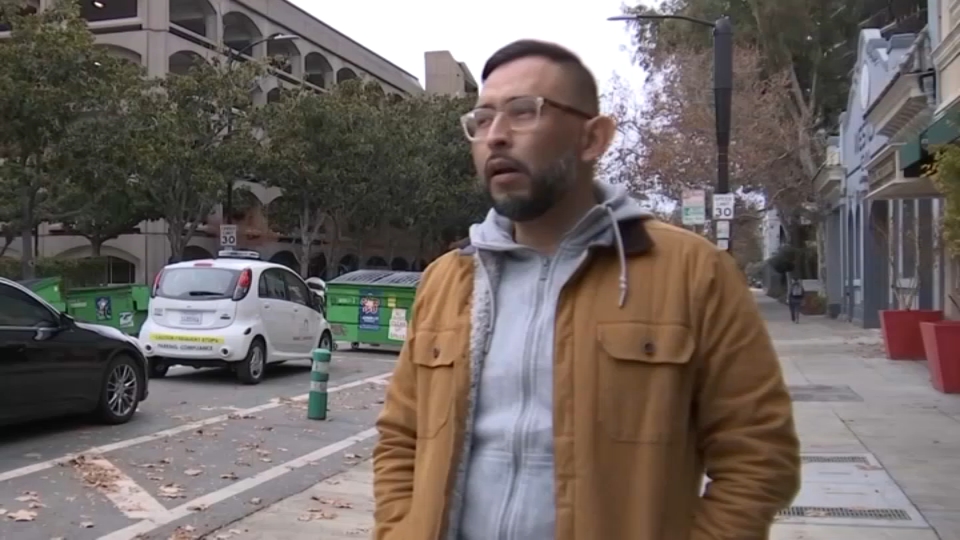Every time Denise Gonzales walks into her San Francisco shop Luz de Luna, there are thousands of eyes on her. From skeletons to saints, she is never alone in her 24th street store in the city’s Mission District.
“I love them,” Gonzales said, peering around at the vast collection of figurines and religious items inhabiting every surface. “Nothing is too much.”
Gonzales describes Luz de Luna as the neighborhood’s gift shop — though it’s become something more of a cultural treasure on a street replete with murals, panaderia shops and other colorful Latino businesses.
“This is a place that is filled with traditions,” Gonzales said, flanked by a bouquet of paper flowers, “filled with colors, filled with flavors.”
If there is a flavor to Gonzales’ shop - it’d be called a bit of everything. Shelves are crammed with Day of the Dead figures that stare out at a bin full of ceramic skulls, lorded over by a statue of saint yielding a sword. The walls are decorated with silvery ex-votos. A display case is teeming with jewelry including a pair of earrings festooned with the Virgin Mary.
Gonzales held up a colorful wool blanket from her native Peru, a country known for its bright colors . A side room held her collection of crystals and incense.
“This is a cheerful shop,” she said. “We use a lot of colors, a lot of textures, a lot of items and people are happy just being here.”
Local
Gonzales is also happy to be there. After moving to the U.S. from Peru in her twenties, she began a career in the medical field and worked for decades in cardiac clinics. But in 2008 the Recession closed the San Francisco clinic where she was working and Gonzales mulled a career change. She considered opening an antique shop — or maybe a cafe — something fun. Her love of the arts pointed her toward her current path — though she sees a parallel to her time in the medical industry.
“I was always attending people,” Gonzales said, “and sometimes I feel like here I do that - I get connected with people.”
Get a weekly recap of the latest San Francisco Bay Area housing news. Sign up for NBC Bay Area’s Housing Deconstructed newsletter.
She opened a small shop to sell figurines and other gift items, then moved to 24th Street where her colorful wares fit perfectly with the neighborhood palette.
“I came to 24th Street knowing that we needed to show our culture here,” she said.
Luz de Luna’s busiest time of year falls in late October as people ready for Dias De Los Muertos celebrations. The store’s miniature altars are among the most popular items as the neighborhood’s Latino community prepares to honor its departed.
For Gonzales, at the core of her offerings are the artisans who create the one-off items she sells. The figurines, the statues, the paintings — all made by an army of artists who are partially supported by her shop.
“There’s a lot of time, a lot of energy,” she marveled, “a lot of patience to even make an earring.”
Gonzales’ love of artists and their work is what steered her to her favorite artist - the painter Frida Kahlo who is memorialized in statues, figurines, paintings and even the life sized cutout that greets customers entering her shop.
“She’s an artist who went through a rough life all through her life,” Gonzales said, “well now she’s recognized for her paintings, because she was tough.”
Gonzales has her own fortitude in embracing a late-life career change, and planting roots in a neighborhood that is fighting to retain its identity. She knows she’s where she’s meant to be, doing what she loves.
“This is what I do, I enjoy every day,” she said. “It makes me happy — I enjoy being in service of the public.”
With its massive amount of merchandise crammed into every corner, one wonders if Gonzales ever feels over-stimulated by the sheer amount of eyeballs on her.
“Probably yes, but I don’t see that way,” she said with a laugh, adding the only time it feels like too much stuff is when it comes time to dust.
The rest of the time, she’s perfectly at home with the thousands of characters accompanying her at work every day. She sees it more as a roomful of stories.
“Every corner has history,” she said.



